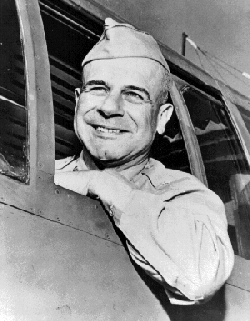In the beginning of 1942, gloom was descending over the United States like a winter twilight. On all fronts, the United States and its allies were reeling from the blows of the Axis powers. In the Pacific, Japan had taken Malaya, Singapore, Java, Guam and Wake Island and was threatening the lifeline with Australia. On April 9, 1942, the "Battling Bastards of Bataan" in the Philippines finally laid down their arms. In the Atlantic, German U-boats were sinking American ships within sight of the U.S. coast. Britain was being strangled, and the German Wehrmacht was in the suburbs of Moscow.
The Axis powers looked invincible. In the midst of these dark days burst the light of the Doolittle Raid on Japan. The U.S. Navy conceived the raid as a way to raise morale. It entailed launching Army twin-engine bombers from the deck of an aircraft carrier to bomb selected cities in Japan. It was a way to strike back. It was a way to demonstrate that no matter how bleak the future looked, the United States would not give up.
Leading the attack was Army Lt. Col. James H. Doolittle. Jimmie Doolittle was an aviation pioneer and daredevil racer. He pioneered instrument flying. He won the Schneider Race for the Army in 1925. He pushed for higher octane gasoline for aircraft in the 1930s. Doolittle trained the volunteer crews to take off their B-25B Mitchell bombers in only 450 feet instead of the usual 1,200. The planes were loaded aboard the USS Hornet in March 1942. The plan was to launch the bombers within 400 miles of the Japanese coast. They would then bomb their targets and continue to airfields in China.
